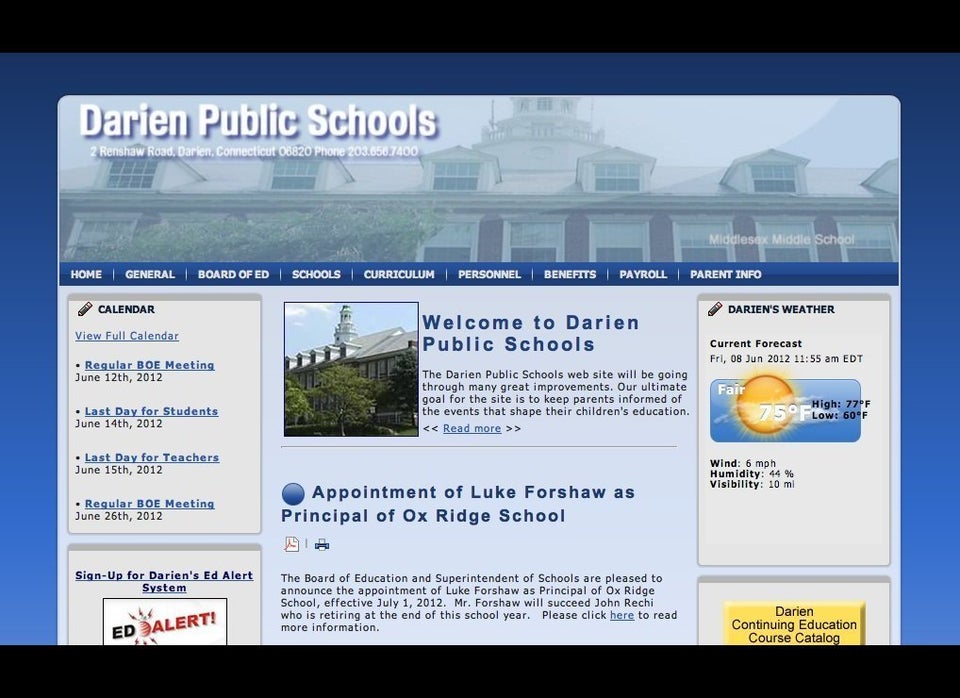
After California schools eliminated art programs and increased class sizes to survive budget cuts, they are finally on the verge of getting more money thanks to voter-approved taxes and economic recovery.
But K-12 districts may not share equally in the expanding budget pie.
Gov. Jerry Brown is pushing hard to overhaul California's convoluted school funding system. His plan has two major objectives: Give K-12 districts greater control over how they spend money, and send more dollars to impoverished students and English learners.
Studies show that such children require more public help to reach the same level of achievement as their well-off peers. But as rich and poor communities alike clamor for money in the wake of funding cuts, Brown's plan could leave wealthy suburbs with fewer new dollars than poorer urban and rural districts.
That makes perfect sense, said Michael W. Kirst, president of the State Board of Education and a Stanford University professor who co-wrote a 2008 paper that became the model for Brown's proposal.
"Low-income people have less resources to invest in their children," Kirst said. "A lot of investment comes from parental ability to buy external things for their kids that provide a better education. In the case of low-income groups, they can't buy tutors, after-school programs or summer experiences."
The Democratic governor wanted to install his plan as part of the last budget, but changes were so dramatic that education interests balked. Brown is reworking his proposal for his January budget, hoping that passage of his tax hike has given school officials confidence they will all receive sufficient money.
Brown officials held three workshops this fall to solicit input, as well as build good will with education groups.
One example from the Sacramento region shows how Brown's proposal would shift dollars to students in need.
In Brown's last proposal, Buckeye Union School District in affluent El Dorado Hills and neighboring communities would receive $7,757 per student in 2018-19, according to analysis by the Public Policy Institute of California. Robla Elementary School District in working-class North Sacramento would get $10,554 per student.
Nine in 10 Robla students in 2010-11 qualified for subsidized school meals. At Buckeye, only one in eight students qualified.
Robla Superintendent Ruben Reyes is cautiously optimistic the governor's plan will result in more funding, but he isn't counting on the money. Students speak 26 languages at Robla's five campuses, and a significant number have to share homes with other families.
"This could be a very positive thing for Robla," Reyes said of Brown's proposal. "We work very hard to meet the needs of both of these (English-learner and low-income) groups of students. They come to school less prepared, and often times the school has to make those things up."
He said the district tries to provide field trips and activities that families may not be able to afford. Robla has translators to help English learners communicate. More money could buy training, new materials or extend learning time, he suggested.
Buckeye Superintendent David Roth agrees that districts serving low-income students need more funds. But he notes that all districts have suffered cuts, and even the best-performing California schools such as his remain at a competitive disadvantage against those beyond California.
"We have some of the most poorly funded schools in the country, and the state needs to redesign our funding model in a way that brings all districts up to the national average," Roth said.
One of the most controversial parts of Brown's proposal last year gave districts an additional boost if more than half of students qualify as low-income or English learners. The idea was that a concentration of at-risk students dramatically increases need.
"There's a greater totality of needs if you have a school with 95 percent of students that need intervention than if you have 2 percent of students," said Brooks Allen, director of education advocacy for ACLU of Southern California, which has been fighting to ensure low-income schools receive additional aid. "We thought that was a strength of the proposal."
But suburban districts think the "concentration grant" goes too far. In Ventura County, Conejo Valley Unified School District Superintendent Jeffrey L. Baarstad said an initial version of the plan would have given one low-income area as much as $5,000 more per student than his district.
"The concern out there is that there's a problem with winners and losers," Baarstad said. "Everyone has been a loser the last five years. Even though someone like me absolutely agrees with putting money behind (low-income) kids, at the same time I want to rebuild my district, too."
As Brown found last spring, the challenge with overhauling any decades-old finance system is that losing Capitol interests will resist change. The rich-poor divide is not the only one.
Brown's proposal would eliminate most earmarks called "categoricals." For years, the state has provided schools with general-purpose money as well as earmarks that must be spent on specific programs.
Categoricals emerged over decades after lawmakers and special interests identified one problem or another and wanted to encourage school districts to correct them. The California Teachers Association, for instance, has backed incentives for districts to reduce class sizes -- and hire more teachers.
In the wake of recent budget cuts, the state temporarily relaxed most earmarks, telling districts they could still receive funds without spending on state-driven priorities.
That riled advocates for specific programs, particularly adult education. Since the state relaxed earmarks, 82 percent of districts have cut some or all adult education, according to the Legislative Analyst's Office.
Supporters say their programs help adults find jobs and learn English, and they want to restore protections they had before budget cuts.
"It's a tenuous situation when you pit adult learners against K-12," said Dawn Koepke, a lobbyist for the California Council for Adult Education.
The state has earmarks for items as small as notifying parents of kindergartners and first-graders that their children must obtain a dental examination before they start school. That requirement came from a 2006 bill by then-Assemblyman Bill Emmerson, an orthodontist. It, too, might disappear under Brown's proposal.
In workshops, the CTA has asked that Brown preserve money for class-size reduction. The more Brown maintains funding protections for any group, however, the further he strays from his original goal.
Without describing specifics, Brown's Department of Finance spokesman, H.D. Palmer, said the governor's desire is "to move decision-making responsibility and accountability to the local level."
Call Kevin Yamamura, Bee Capitol Bureau, (916) 326-5548. ___
(c)2012 The Sacramento Bee (Sacramento, Calif.)
Visit The Sacramento Bee (Sacramento, Calif.) at www.sacbee.com
Distributed by MCT Information Services
